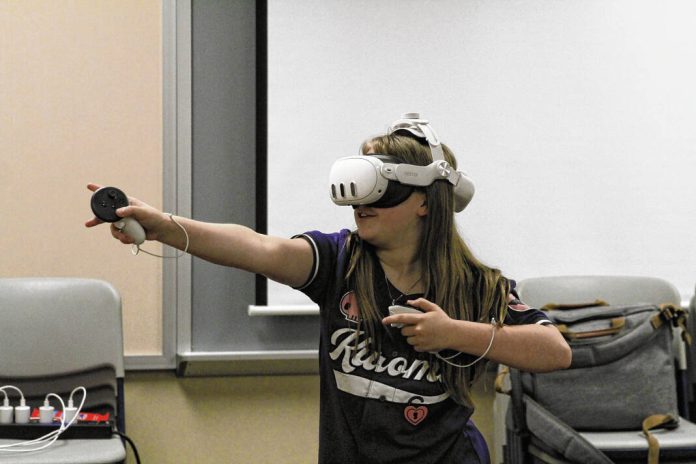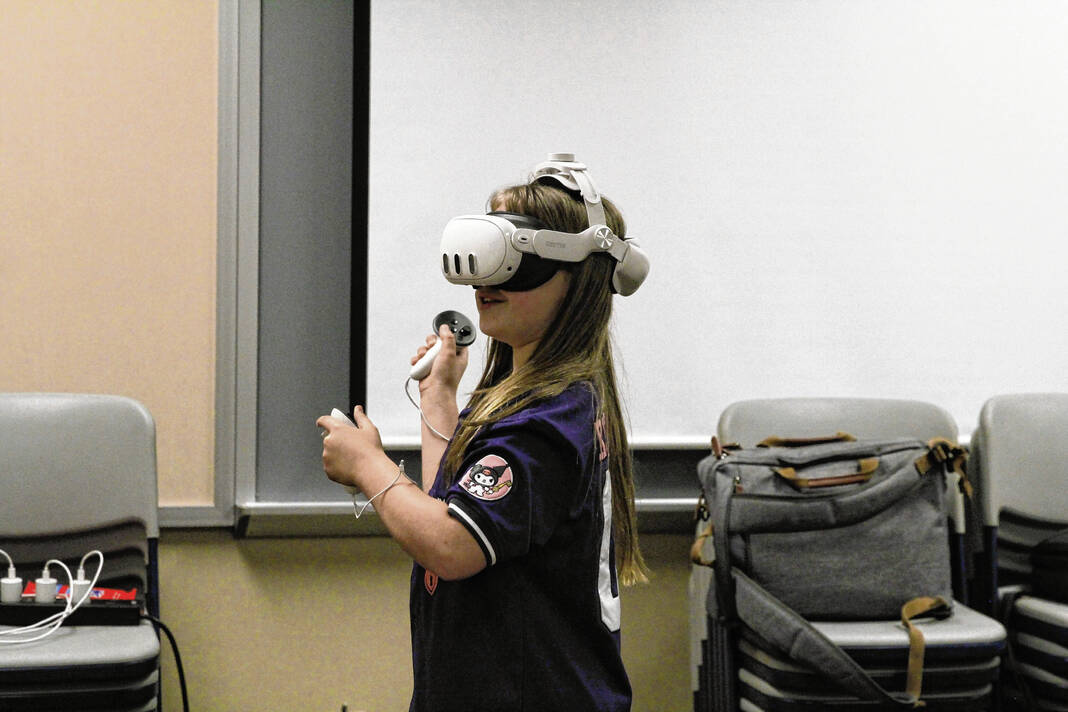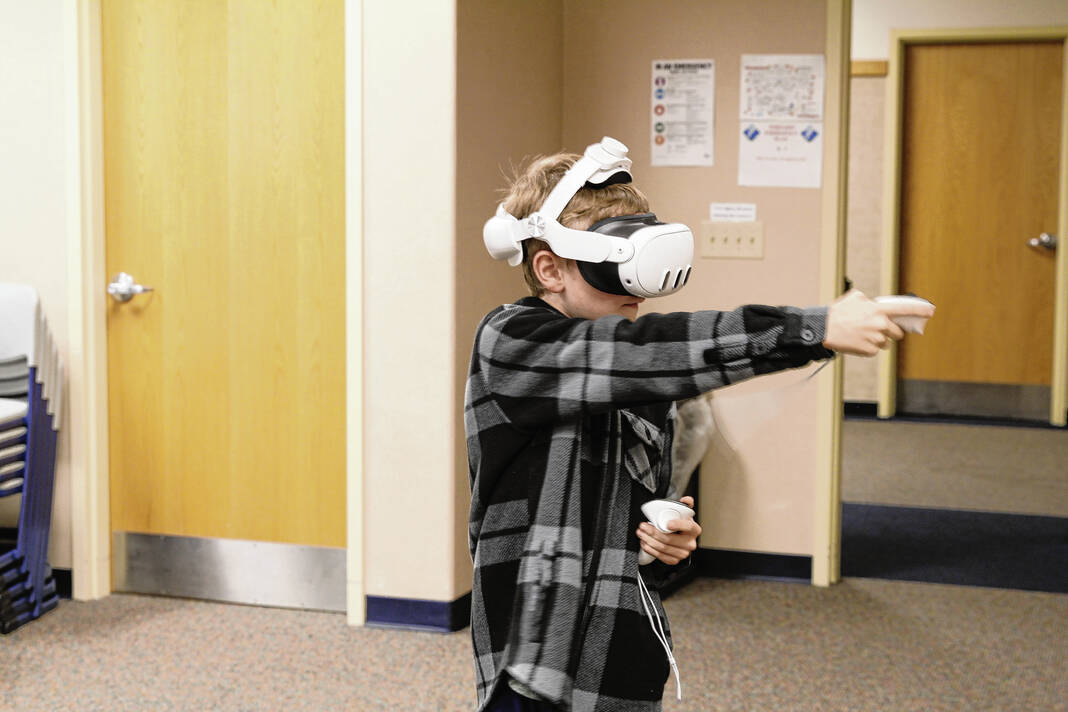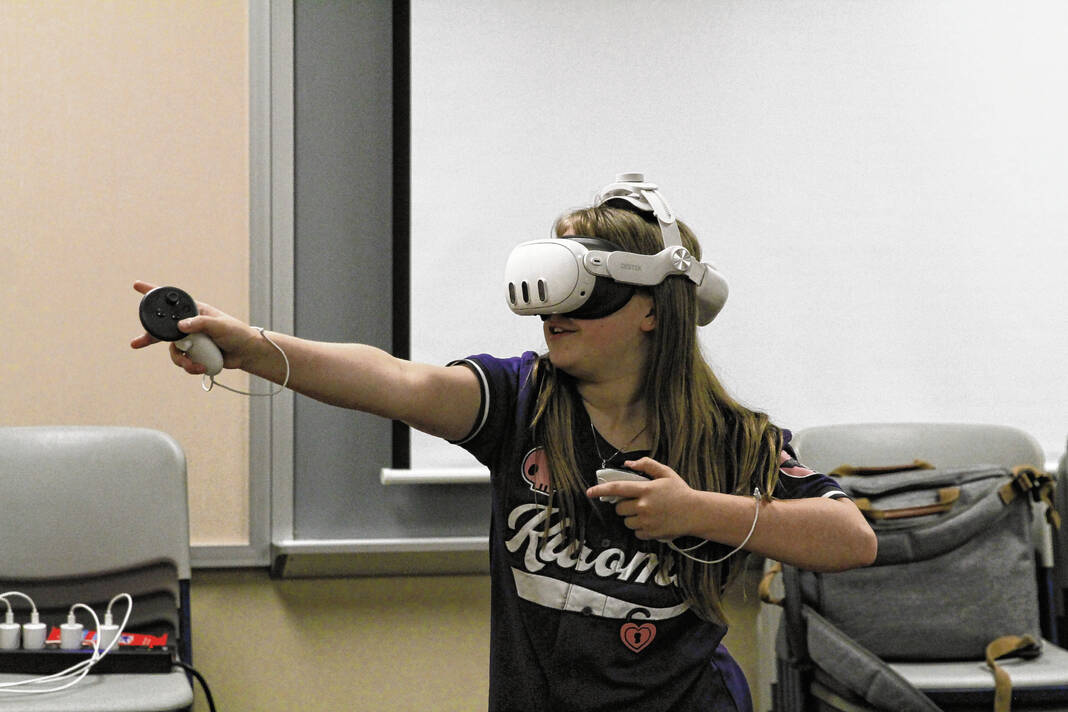
GraceLyn Pickett tests a new virtual reality tool at Custer Baker Intermediate School on May 9. Jayden Kennett | Daily Journal
Some sixth-grade students at Custer Baker Intermediate School got the chance to test a new virtual reality experience that will immerse students across the United States in interactive history.
Funded through the Indiana University Center on Representative Government and the U.S. Department of Defence, the VR tool enhances civics education, a core part of Indiana’s 6th-grade curriculum. Civics education includes how governments are created and run today.
The interactive tool Democracy Quest is designed to enhance creative thinking, research, media literacy and real-life skill building. Students spent about an hour earlier this month testing the new tool, giving feedback and even designing character ideas during the testing.
Custer Baker students are a small piece of the puzzle to bring the new interactive tool to life.
Students tested the headsets with developers nearby to help if they got stuck and answered a questionnaire about their experience. Democracy Quest will combine analysis of source material from the Library of Congress with interactive elements, offering five learning modules, complete with characters to interact with, learn from and assist.
Custer Baker students tested a minimal version of Democracy Quest where they navigated through a maze, threw objects into a target and pulled a series of levers to move a ball from one side of a puzzle to the other.
Once completed, students got to explore the Philadelphia neighborhood where the U.S. was founded.
The first unit, part of which students tested, takes students to 1700s Philadelphia, where students experience the signing of the Constitution and meet characters related to Benjamin Franklin and George Washington, said Matt Madeira, game designer with Half Full Nelson, who is developing the interactive tool.
Developers hope to launch the unit focused on the Philadelphia National Convention by Oct. 1, but the date is tentative. When students look around in the game, they will feel like they’re in the 1700’s, Madeira said. They can see shops, carriages, people in period clothing, and more.
“You can actually look around, it’s totally 3D,” Madeira said. “And it feels weird because when you put your hand out, you see your hand. You reach out and you grab something, but you don’t normally do that in a game, so it’s kind of a fresh experience. But we think that that’s where you’re gonna have the best experience for looking at history.”
A part of the interactive learning tool is talking to a 15-year-old apprentice at the print shop Ben Franklin once owned, seeing what he does during his work day and seeing how he feels about events that are shaping the country.
Students even virtually worked in the print shop for a bit. They could use the virtual printing press, pick up letters, place images, pull the lever and see their poster come to life in VR.
In other VR lessons that are still in development, students will get to immerse themselves in key moments in U.S. History like signing the U.S. Constitution, Tulsa Race Massacre and WWII Indigenous Code Talkers, said Stephanie Serriere, IU Columbus professor of social studies education in a press release.
“There’s a major event coming up, so you talk to the people before the event happens and then you’ll come back to it later and see how it impacted them. That’s the general goal,” Madeira said.
Having students test the tool gives developers an idea of where they can improve and where students may struggle during the interactive unit. Students at Custer-Baker gave developers an idea of how they move around in VR and if its too easy or hard for students to navigate.
“It’s still early days for us, but this is valuable and credible feedback,” Madeira said.
Six grader Yanxin Li used to live in Philadelphia and recognized some of the historic buildings, she said after trying out the technology. Seeing the printing press in an interactive 3D way was her favorite part, she said.
Six-grader GraceLyn Pickett didn’t know what a printing press before she learned about it in the classroom, she said. But seeing the printing press in an interactive way made it much more memorable for her, she said.
“It challenges your brain, but you also get to learn a lot about history,” Pickett said.
The program is currently in its pilot phase and will take three years to develop. Once finished, the tool will be free for teachers to use. Production of the other four modules will occur over the next two years. Developers hope to come back to Custer Baker for more testing once they are further along in the process.








